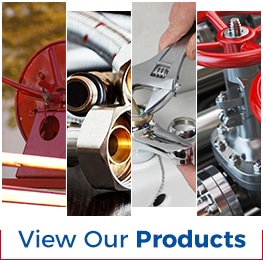
Pressure washing is a popular way to remove dirt, grime, mold, food residue, dust, and other types of debris from a variety of surfaces. It has a water pump that’s powered by an electric motor or gas engine, which accelerates water to create high pressure. The water is then ejected from the nozzle, or wand, at high pressure through a high-pressure-rated hose. This allows for more effective cleaning than regular hoses and scrubbing.
Pressure washers are very versatile tools. They come in various sizes and power levels, ranging from small electric models for home use to large gas-powered units for commercial applications. Pressure washing is used for cleaning driveways, sidewalks, decks, roofs, siding, fences, and many other external surfaces. The process can also clean commercial and residential vehicles and equipment.
COMPONENTS OF A PRESSURE WASHING SYSTEM
The typical pressure washer consists of several components. There’s the spay/gun wand, a handheld component that directs the high-pressure stream of water. It often includes a trigger to control the flow. The wand has a nozzle attachment that determines the spray pattern and pressure.
Another crucial component is the high-pressure hose that carries pressurized water from the pump to the spray gun wand. Pressure washing hoses are designed and constricted to withstand the high pressures generated by pressure washers and to deliver a reliable supply of water.
SELECTING THE RIGHT PRESSURE WASHING HOSE FOR THE JOB
Shopping for a replacement pressure washing hose can be a challenge. There are many different factors to consider when selecting a new hose. These factors include:
- Pressure resistance – It’s important to select the proper pressure resistance. Pressure washing hoses are built to handle high pressures, often ranging from 1000 PSI (pounds per square inch) to over 4000 PSI, depending on the model and intended use.
- Reinforcment material – Pressure washing hoses are reinforced with materials such as wire mesh, textile braid, or synthetic fibers to prevent bursting under pressure. This reinforcement also adds flexibility and durability to the hose.
- Abrasion resistance – The outer layer of a pressure washing hose should be designed to resist abrasion from rough surfaces and debris, ensuring longer hose life.
- Chemical compatibility – Pressure washing hoses should be designed to withstand exposure to the various chemicals used in cleaning applications without degrading or deteriorating.
- Temperature resistance- Pressure washing hoses need to be able to handle a wide range of temperatures, from frigid cold to extreme heat, without losing their integrity.
- Flexibility – Besides being reinforced for strength, pressure washing hoses are also designed to be flexible, allowing them to be easily maneuvered around a work area.
- Length – Pressure washing hoses are available in various lengths to suit different cleaning tasks and preferences, ranging from short hoses for small areas to longer hoses for larger spaces.
- Kink Resistance – Quality pressure washing hoses are designed to resist kinking, which can inhibit water flow and decrease cleaning efficiency.
WE’RE HERE TO HELP YOU FIND THE RIGHT PRESSURE-WASHING HOSES FOR YOUR JOB
Need help finding the right pressure washing hose for your application? Get in touch with ASJ Industrial Hoses & Fittings. We’ve been a leading provider of induistry-leading hoses and hose fittings (including clamps, connections, valves, and gauges) since 1982.
Our sales staff is here to answer all your questions when it comes to selecting the right product for your job. We maintain a large inventory of stock at our 24,000-square-foot facility in Corona, CA, so most parts are available for immediate shipping or pick up. If you’re in the Riverside County area, you can visit us at 1033 E. 3rd St.. We’re just off the freeway near the Hwy 91/I 15 Interchange.
You can reach ASJ Industrial Hose & Fittings at (951) 735-1351 or contact us through our website to receive a free quote. We look forward to serving you!



 Phone:
Phone: